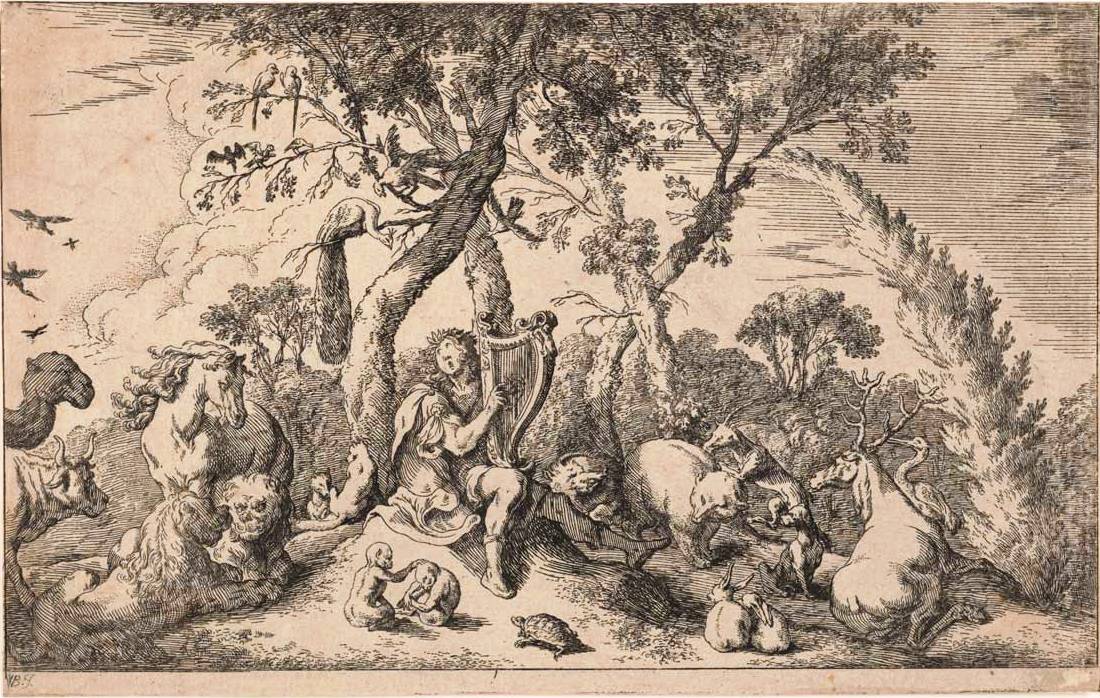

Orpheus’ one explicit, named appearance in the Divine Comedy could scarcely be more fleeting. Though a mythical rather than historical figure, his name appears, surprisingly, in company with prominent intellectuals: 'virtuous pagans' who lived before Christianity and populate Hell’s anteroom, Limbo (Inferno: IV, 140). One characterisation of Orpheus is as a Greek poet and musician, famous for his ability to use these skills to charm, with the lyre his signature instrument. There are, however, many others. Dante scholar, Leah Schwebel, argues that there are 'multiple imprints' of Orpheus throughout Dante’s text. These include clear resonances between Orpheus’s passionate character and his story of fated love; Francesca da Rimini's tale; and Dante’s own love for Beatrice Portinari. In the first of these examples, a sorrowing Orpheus with his lyre in hand, crosses the river Styx and enters the underworld in a quest to find his dead wife, Eurydice. In her tiny sketch of Orpheus, Traquair shows him kneeling to play his instrument beside a child, while Homer, Plato and others, stand by.
One of Dante's major influences in developing the Divine Comedy was Ovid's Metamorphoses, in which Orpheus features. In the series he was best known for, which draws directly on the same source material, Johann Wilhem Baur depicts the legendary musician charming the animals around him during his sojourn through the wilderness, pining after Eurydice, who he failed to free from the underworld.
